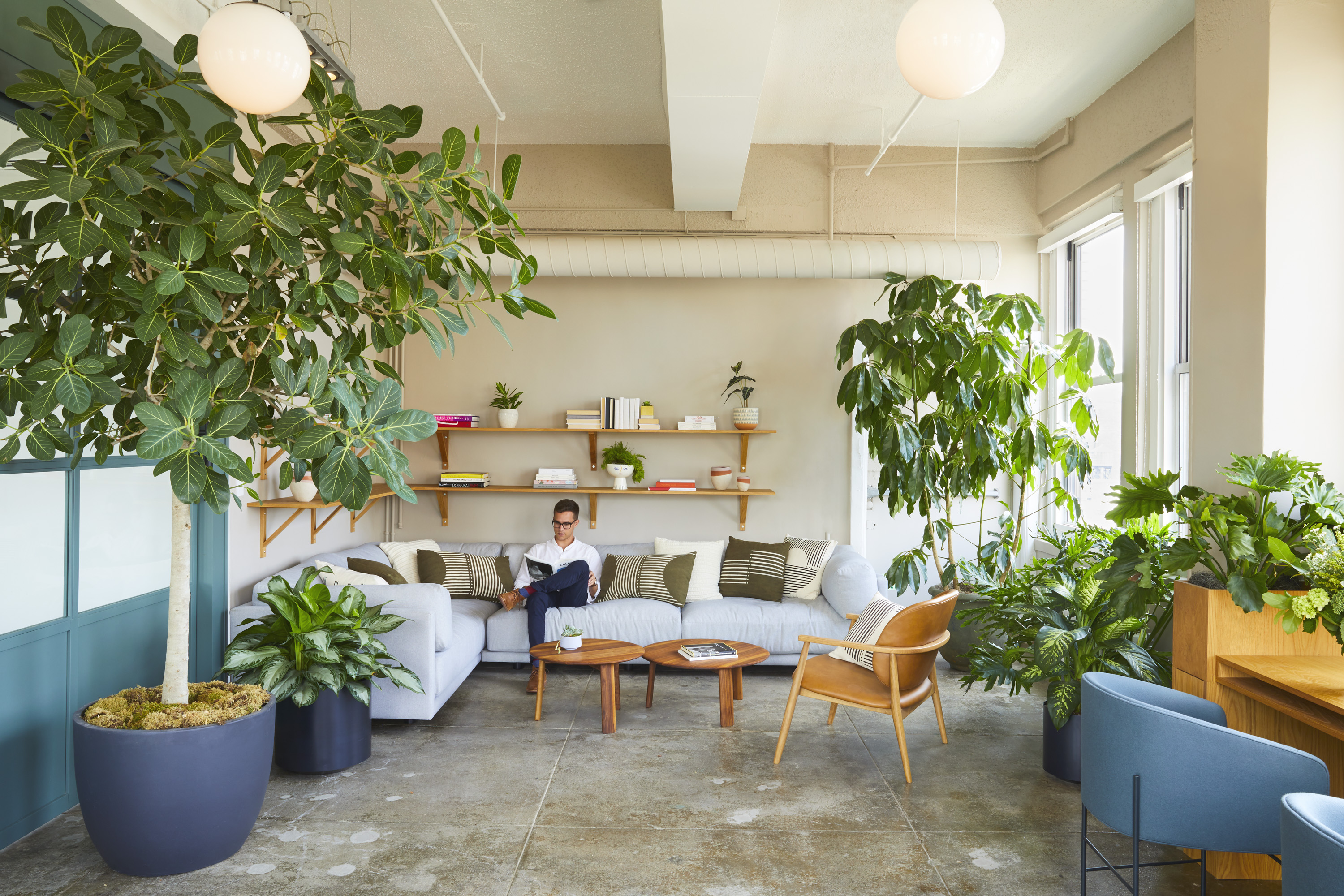The right approach to office design can help your company navigate technological change, accommodate growth, and adapt to changing market conditions.
Today, business has one constant: change. A recent Harvard Business Review study found that 93% of organizations are seeing significant volatility in their markets. Organizations must adapt to evolving technology; shifting work norms, including remote work and varying schedules; and all manner of uncertainty. More than two-thirds (68%) of leaders say they haven’t found the best way forward to achieve agility and innovation in this age of change.
“The way people work has changed dramatically over the past decade. It’s a mistake to assume that we will continue to work the same way even a few years from now,” says Brian Chen, co-founder and CEO of New York City-based ROOM, a manufacturer of modular workspace solutions.
While your office layout and environment may not be the first change-management tool that comes to mind, the space in which your employees work has a big impact on everything from their productivity to your company’s ability to scale. Here are five ways to plan office space for a constantly changing environment.
Plan for Day 1 and Day 2
In many ways, Day 1 planning—the overall layout of your office before you move in—should minimize regret. Prioritize flexibility and the ability to adapt to future changes, such as scaling up or down. You need to be ready to accommodate sudden growth or a pivot in business that means you need less space and need to sublet.
Day 2 planning, which is most often overlooked, maximizes the space to be most effective for your team once you move in. It should include proper workstation configuration and flexible, modular options that help you create the spaces your employees need and want. Give your employees a chance to see how they interact with your office space and allow for the budget and opportunities to adapt accordingly.
Don’t assume you know how your office is being used
Effective office space planning uses good data. Don’t assume that once you have made your Day 1 design decisions that you know how people will behave. They will surprise you. Regularly look at your business and investigate some important questions:
- How are employees currently using office space?
- What are your growth plans?
- What types of spaces do employees need to do their work effectively?
Gather data by observing, surveying employees, and tracking space usage. The results may surprise you. For example, New York City real estate firm Compass found that, of the 80% of the time its conference rooms were booked, 40% of the time they were never used. Roughly one-third of the time, the rooms were occupied by just one person. This amounted to roughly $30,000 per year in misused real estate for each conference room.
Make your office a place where people want to spend time
Think holistically about the types of work your company’s varied teams do. Chances are, each needs some combination of privacy for deep work; space for calls, teleconferences, webinars, or other communication or collaboration; areas where small groups can huddle for brief meetings or brainstorming sessions; spaces where larger groups of people can meet without disrupting others.
“Your office is just one part of a network of places where work can be done. Make sure you design your office with this context in mind, and don’t just think functionally by department. Think about the varied nature of work, and how to create attractive environments for different types of work,” Chen says.
Incorporate “the virtual office”
Collaboration tools have improved dramatically over the last few years. Small “team huddles” with members in various time zones dialing in are common. A modern office’s collaborative environment might just be a single-person phone booth that is purpose-built for video conferencing. Options like ROOM’s modular phone booths can provide privacy and spaces for deep work, while maintaining flexibility.
Your teams may also need screen-sharing or projection capabilities. Provide tech-powered whiteboarding spaces for brainstorming, as well as private areas for individuals to collaborate with remote workers, engage in online training, have a phone call or videoconference, or use other communication tools.
Change is part of your design
Over time, your office may have to flex to accommodate more or fewer employees. You may find that more employees are working remotely, so you need less space, or you may find that you need to fit more people after a period of fast growth.
Create a plan for both growth and downsizing so you can quickly optimize your office investment. How can you use options like booths, moveable walls or panels, and other solutions to configure your space to allow more people to work? If your remote workforce grows, how can you streamline your space needs so that you can sublet some of your office space and optimize your investment? “Don’t let change be something that just happens to your office. Weave flexibility into the fabric of your original designs so that you are prepared for it in advance,” Chen says.
The environment in which you work has a direct impact on the productivity and effectiveness of your employees. One Harvard Business School study found that open floor plans decrease collaboration by as much as 70%. However, when you use data and flexible solutions to support employees’ needs in the workplace, you optimize productivity—and may even improve retention, too.
